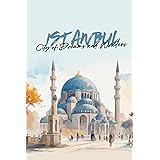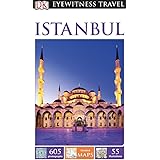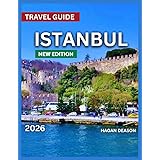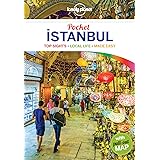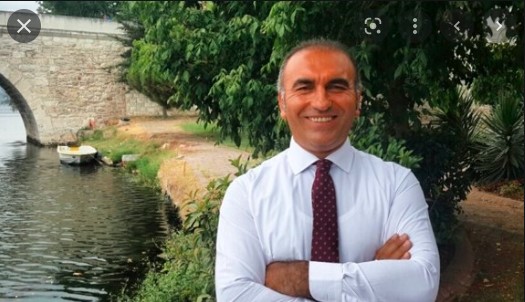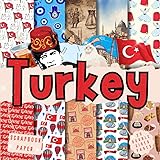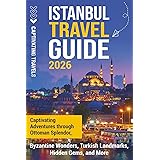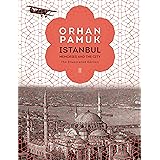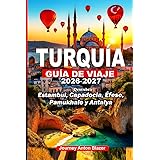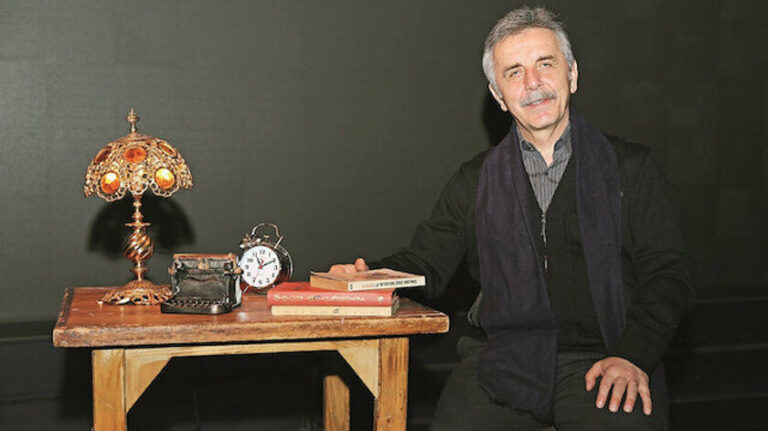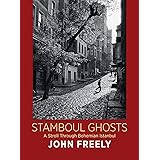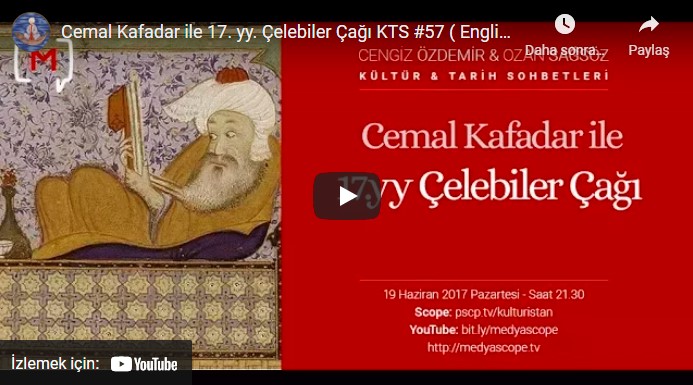by Mehmet Hasgüler, Ass.Prof. Dr., University of Canakkale
- MÜLLER CELKA et J.-C. DAVID, Patrimoines culturels en Méditerranée orientale : recherche scientifique et enjeux
identitaires. 1er atelier (29 novembre 2007) : Chypre, une stratigraphie de l’identité. Rencontres scientifiques en ligne de la
Maison de l’Orient et de la Méditerranée, Lyon, 2007.
THE IDENTITY OF CYPRIOTNESS
AND DIFFERENTIATIONS IN TURKISH CYPRIOT
AND GREEK CYPRIOT COMMUNITIES
Mehmet HASGÜLER
Ass.Prof. Dr., University of Canakkale
ABSTRACT
In Cyprus, there are signs of a quest for a common Cypriot identity, which requires in-depth scientific investigation. Here, the aspiration for a common Cypriot identity will be analyzed from the point of view of both Turkish and Greek communities. The self-identifications, expectations and values that are seen to be part of the Cypriot cultural identity by the two communities will be placed within a conceptual frame of reference.
A fragmented political culture is one in which beliefs, values, traditions, emotional attitudes, sentiments, symbols and ideologies vary amongst groups within the society. In so far as the political system is concerned, differences are being reinforced and produced by such cleavages as history, geography, ethnicity, tribe, religion, and language. History has long been referred as the main source of existing troubles in Cyprus. It has been argued that the present difficulties of Cyprus’s political life stem, to a large extent, from the diversities of the historical past. The nature of such a diverse historical past has
given occasion to a bi-communal society, deprived of an emergent Cypriot national consciousness.
Cultural subnationalism is defined as “political assertions of self-aware groups within the state”. It is also to be noted that the political system in Cyprus was already fragmented due to the veto right of the Turkish Community or the establishment of two separate Communal Chambers. It is generally accepted that there is congruence between political culture and political structure, though complete congruence does not seem to be absolutely necessary for political stability in democracy. Political culture and structure are in a mutual relationship. They affect each other and they also constitute a political behaviour. In Cyprus, political behaviour has been affected more by values than by structure. The political structure has been given enough chance to live, grow, change, and affect political attitudes for a long time. The emphasis of this study will therefore be on values (political culture) rather than interests or the structure.
Amongst many studies concerning Cyprus, the issue of identity has remained as one of the vaguest items. The issue has become even more complicated with the increase in the number of relevant studies. This must have
a lot to do with the fact that identity is still in the process of being constructed.
The notions of identity and non-identity were amongst the topping discussion items in the unipolar
world of the post-1990 period when ideologies were turned upside down. The boundaries of these charming
notions which were created particularly by the new actors emerging as a consequence of the collapse of socialist
regimes were expanded through unending discussions. These discussions were so charming that they could even
go as far as proclaiming of the end of ideologies and the history. The discussions still continue with all its charm
like the atom splitting, with its smallest particles invested with identities. Cyprus had been mesmerized by this
charm at least fifteen years before 1990. As a matter of fact, the question of identity on the island of Cyprus is
one of the most sensitive movable assets. The question of Cypriotness has always been an old and popular
discussion item among the intelligentsia, yet these discussions are still far from being fruitful. The significance
1
and complexity of the matter can both account for this. The purpose of this essay is not to offer a solution to this
intricate question but to seek answers through novel questions.
Cypriotness as a phenomenon can be discussed in five different periods. The first is the Ottoman period
between 1571-1878; the second is the period of British Colonization between 1878-1959, the third is the period
of Independent Cyprus between 1960-1963 ; the fourth is the Ghettoisation period of 1964-1974 and the fifth is
the period of Schism in the aftermath of 1975. As suggested above, intensive discussions regarding the identity
of Cypriotness commenced after 1974. The underlying factor behind these intensive discussions was the war and
the fact that the island was divided. The Venetian and Phoenician periods prior to the Ottoman era can present
important clues and reference points to foster a deeper understanding of the question of identity. However the
history of the term Cypriotness is not even as long as the basic classification stated above. At the beginning of
1927 the governor of Cyprus, Sir Ronald Storrs commanded that the term Cypriot be used in official transactions
in government offices because he found the term “indigenous” degrading. The reason why this term was opted
was to create a new Cypriot patriotism in order to slash the sway of Hellenistic nationalism. 1
In order to come up with a definition of Cypriot identity, one needs determine the cultural similarities of
and differences between the two communities. For this, the concepts of cultural similarity and difference should
be contextualized in a given time frame. An accurate elaboration on the identity of Cypriotness calls for a
historical reading. For instance, how was the identity of Cypriotness positioned under the Ottoman rule? Before
the Ottoman reign, Orthodox Christians had inhabited these territories for almost fifteen centuries. The Orthodox
Cypriots claiming to have the final say on this historical heritage alone creates a Muslim Cypriot “other”.
Muslim Cypriots who came to Cyprus with the Ottoman rule were treated as guests on the island. At least a
period of a few centuries had to lapse for the Muslim Cypriots to develop a sense of belonging towards the
historical and cultural environment. The Majority of Muslim Cypriots were anyway “nomads in exile”. The
integration of Muslim Cypriots with Orthodox Cypriots was to a certain extent successful. However, once an
awareness of nationalism arose, the two communities were separated by the seditious enlightenment. Under the
Ottoman rule, the similarities of, and differences between, the two communities were welcome as richness and
perhaps that was the only period when Cypriotness could ever flourish on the island. Ottoman rule was also the
only period that the two communities co-exited in peace and harmony with no feeling of enmity against each
other. 2
Under the Ottoman rule, Greek Cypriots and Turkish Cypriots converted their religions in massive
numbers which could be considered a historical phenomenon. However referring to these reciprocal conversions
as separate, isolated developments might distract us from the current context. Nevertheless one needs to be
aware of the political, economic and religious factors behind these conversions. But I believe that those
discussions are no longer relevant.
Religious, financial and political autonomy that was granted to the Orthodoxy Church under the
Ottoman rule enabled Greek Cypriots to become a more organized society and contributed significantly to their
enlightenment. The Greek Cypriots engaging in commercial activities and thus accumulating capital where led to
an earlier and faster nationalization process than that of the Turkish Cypriots. This situation cannot be explained
1 AN A. 1998, p. 34. 2
ÖZGÜR Ö, 1989, pp.17-22.
2
solely by looking at domestic factors. The Hellenic Revolution of 1821 and the subsequent freedom movements
contributed to this process. In this sense, the fast awakening and rise of nationalization during the time of British
colonization imparted the Greek Cypriot community a vanguard role and identity. There are merchants among
Muslim Cypriots as well. However it is not possible to say that their commercial activities are conducted in a
disciplined and organized manner.
The identity of Cypriotness is an embodiment of the anti-colonial movements during the last seven
decades in Cyprus and the reactions and counteractions of Cypriots. It is possible to say that during the first
years of these anti-colonial movements, Greek and Turkish Cypriots were on good terms. Untouched by the
process of modernization, disparate religious identities could co-exist in the common public realm; therefore
social unrest was almost non-existent. The new order established in the aftermath of the Second World War and
the consequent anti-colonial movements overwhelmed and beleaguered this underdeveloped island in an instant.
On the one hand were the Greek Cypriots who were able to keep up with the process of anti-colonial movement
for enosis and on the other, Turkish Cypriots, who reacted to idea of enosis and demanded the partition of
Cyprus. As a consequence, while the Greek Cypriots became the symbol of anti-colonial movements, Turkish
Cypriots happened to represent the resistance block.
“Cypriotness” is a concept which was referred to by those aspiring to bring together and create a
rapprochement between the two communities after the dramatic division of the island in 1974. New Cyprus
Association which was founded on 19th March 1975 under the leadership of the Cypriots aiming to reunite the
divided island is the most typical example of such an initiative. The association provided a joint platform for
those who pursued the common goal of raising the awareness of Cypriotness. However this was a belated
attempt made out of despair only after the division of the island. Needless to say, “Cypriotness” cannot act as a
sponge to absorb the historical and cultural predicaments of the tiny island, mobilize sufficient number of people
and neutralize the exuberant zeal of nationalism. The colonial past in Cyprus and diverging reactions of the two
communities against this process precluded this concept from becoming an umbrella term during modern times.
There are a few fundamental reasons behind it. Cypriotness was torpedoed by the British during the dismantling
of colonialism in order to perpetuate their status quo. Thus, the British ensured staying clear of the matter by
inciting the two communities against each other during hard times. The second reason is the fact that Greek
Cypriots chose to carry on the struggle on religious grounds and aimed at achieving enosis (annexation) with
Greece instead of true independence3
. The third reason is the fact that the chances to amalgamate the two
communities throughout the process of independence were disregarded. The nationalist-religious Hellenic
mentality which relegated the status of Turkish Cypriots who were an heir to the Ottoman heritage merely to that
of a guest on the island and significant disparities in religious perceptions of the two communities can also
account for this. While Turkish Cypriots were secular, Greek Cypriots were devout Orthodoxies. The major
policy-makers in the Republic of Cyprus and its aftermath were the priests.
Western countries and Turkey could recognize the presidency of a priest, Makarios of the nascent
Republic of Cyprus where Muslim-Turkish Cypriots were also co-founders. In the modern sense of the word, the
construction process of the Cypriot identity commenced with the First Republic and could last only three years
until December 1963 ending in disillusionment. The Greek Cypriot rulers being reactionary in their religious
perceptions, was one of the main reasons of the failure. Religious, political and financial centers of power
3
MAVRATSAS K. V 2000, p. 39–55.
3
amongst Greek Cypriots could not tolerate the co-existence of the two communities in the Republic of Cyprus.
Of course Turkish Cypriot militant nationalists and influential people from the finance world who took
opportunity from the existing situation cannot be excluded from the picture. From the perspective of the Turkish
Cypriots, their attitudes could be interpreted as an endeavor to preserve their identity and personality against the
Greek Cypriot religious and political centers of power who were self-seeking and hence denied the Turkish
people the right to live. On the other hand, from another perspective, those attitudes might also be read as
disproportionate and provocative reactions. The birth of the Cypriot identity in the modern sense of the word
could be traced back to the foundation of the Republic of Cyprus. The attempt by the Greek Cypriot political
elites to try and greatly amend the constitution of the common state by political coercion marks the onset of this
still-born identity. The conditions under which Cypriotness would be constructed could last only for three years.
In other words, instead of reaching a common denominator, the two communities clung tightly to their ethnic
identities and took the risk of engaging in a conflict.
Discussing the question of identity merely in the light of the aforementioned factors runs the risk of
taking some aspects for granted. Therefore one needs to consider some other elements which constitute the
identity of Cypriotness. The common culture of lethargy, which the geography and unfavorable climate
conditions dictate, is one such crucial factor. The extended summer season and extreme warm temperatures
resulting in 4-5-hour idle time during the day have created this common culture for Greek and Turkish Cypriots.
Due to the extreme and unbearable temperatures in summer and the rules imposed during the British colonial
period, a “siesta” culture emerged, which exists neither in Adana nor Mersin, two southern provinces of Turkey.
This is the invariable positive similarity between the two communities dictated by the local climate. The other
positive commonality is the culture of tolerance typical of the Mediterranean people. The culture of
entertainment based on eating and drinking is one of the first and foremost elements that bring together the
islanders. It is well-known that when it comes to eating and drinking, the two communities were never at
loggerheads with each other. While they have an identical taste for food, their intentions and perceptions differ.
These positive similarities play only a minor role in the formation of the Cypriot identity. The major factors
which determine the minor ones are unfortunately negative. For instance, within the Greek-Cypriot decisionmaking pipeline, the church has the final say. Minister of education cannot be appointed without consent from
the church. From the assignation of the university president to the approval of a marriage act, benediction of a
priest is crucial. While the influence of the church penetrates all areas of life, Turkish Cypriots visit the mosque
only at religious festivals, which differentiates the communities further from each other.
When it comes to understanding of democracy, for Greek Cypriots, the status for the church is
incomparable to even that of the British Queen. The church is not only a traditional but also a political and
economic actor. Particularly the church, called Kykko, operates like a huge company. Kykko has investments in
many fields and its revenues are entirely exempt from tax. For Turkish Cypriots, this tradition is inconceivably
anachronistic. This in fact is only a small example of the spiritual structure determining the political structure in
the south. Both sides of the island are rapidly moving towards the judgment that “heaven is hell” since the gates
are open; therefore it is implausible for the question of identity to fully establish itself before these basic
problems are overcome. Cypriot identity has been an insincere unification tool wielded by the leftists on both
sides of the island. Especially majority of AKEL supporters have had no problem whatsoever with the priests
and their practices. AKEL is even a party in the power struggles amongst churches and tries to gain influence.
4
Historically speaking, AKEL has always avoided a possible conflict with the Church.4
The Secretary General of
AKEL Demitri Hristofias is the Speaker of the Greek Parliament and has to garner support from the priests in
order to become the President in the future.
There are significant shortcomings in the literature about the “re-emergence” of Cypriot identity within
the scope of the EU membership. For example, during the analysis of the two communities, tremendous
differences in the way political phenomena are prioritized were deliberately taken for granted. These differences
however call for a comparative approach and a scientific explanation. As has been stated above, priests are at the
top of the decision-making hierarchy in the Southern part. Political parties follow suit. Military is ranking the
third within this hierarchy. In the Northern part, however, army is ranking the first in the decision-making
hierarchy, just like in Turkey. Political parties come second. Clergy rank the third. This difference alone leads to
a remarkable variation in the sense of belonging, which is an important element in the formation of Cypriot
identity. This significant variation in the sense of belonging, which attach the two communities to political life,
lays bare the hollowness of Cypriot identity. Looking at political problems utterly from a religious-military
perspective precludes an objective and detached approach. The biggest problem in Cyprus stems from the fact
that the Greeks cannot dissociate their religious identities from politics and in the same vein, the Turks cannot
act independently from the army. The main reason behind the collapse of the Republic of Cyprus was the fact
that the Greek Cypriots gave the reins of politics to a religious leader. Of course today priests can no longer be
elected as a president yet it is not at all wrong to say that politics is still not freed from the influence of the
priests.
By looking at the discussions regarding the Cypriot identity in the TNRC Parliament, one can see how
primitive and poor the evaluations are. The discussions are based on unfounded and arbitrary assessments.
Focusing on the cultural similarities between the two communities with the aim of understanding the reasons
behind these would not only minimize complications in the matter but also lead to more sensible discussions. In
fact, there is a very big and important difference between the political cultures of the two communities. The
Greek Cypriot Community’s culture is very much idea oriented while the Turkish Cypriot Community’s culture
is order, reality and might oriented.
One of the most serious problems besetting the Turkish Cypriots is the deployment of settlers from
Turkey to the island. Turkish settlers and Turkish Cypriots differ from each other in their, social, cultural,
religious and economic perceptions. This dual structure becomes even more problematic when Turkish Cypriots
want to shape their own destiny. After 1990s, one repercussion of the Cypriot identity in the TNRC was
“otherization”. Cypriotness was perceived as something superior to Turkishness, hence an orientalist approach
towards the settlers. This approach manifested itself particularly after 2000s with the EU membership process
and peace negotiations gaining momentum. Of course there is a unique culture and lifestyle in Cyprus. However,
being unique was mistaken for being superior and the other being inferior, which, as a matter of fact, is a form of
racism. Especially Turkish Cypriot leftists adopt this humiliating stance when trying to stress the identity of
Cypriotness. It is true that those unable to stand on their feet and sustain their lives immigrated to Cyprus from
miscellaneous cities in Anatolia. However the attitude towards them has to be seriously questioned and
challenged. The chauvinism of Cypriotness is presented as a form of patriotism which isolates and humiliates the
oppressed and the proletarian coming from Turkey. This can also be explained with the fact that these miserable
4
HASGÜLER M. 2007, p. 356-389.
5
people who were not very prominent in Turkey became visible within the Cypriot population and were
manipulated by political figures. The labor force coming from Turkey, numbering between 60 and 100 thousand
people are exploited extremely especially in the construction sector. Nobody is willing to ponder over these
problems. The politicians who ascended to power by espousing Cypriot identity have no serious social security
policies or control mechanisms tailored for the immigrant workforce. The northern part of Cyprus has become an
entire construction site. All the “ex” peace-lovers who used to defend Cypriot identity became paunchy
constructors and beaurocrats. Their biggest concern is to sell out as soon as possible the villas which they have
built on lands owned by the Greek Cypriots and deposit their earnings to off-shore banks without having to pay
any tax.
In the light of these explanations, it is apparent that there are multiple social structures in the north. One
can analyze this multiple structure from the perspective of legal and political citizenship. There are two groups
of Turkish Cypriots, to start with: authentic Turkish Cypriots and second-comers. This highlights the problems
stemming from the dual population structure in the TNRC. In the aftermath of 1974 people from Turkey were
mobilized in order to make up for the labor shortage. During this population transfer, the administrators in
Northern Cyprus granted citizenship to massive number of immigrants which led to an eradication of Turkish
Cypriots’ political will. Consequently, according to the Annan Plan, a significant portion of the TNRC
population was recognized by the UN as Turkish Cypriots. Thus, they were not only entitled to vote in the
referendum but also become legal citizens of the prospective United Cyprus. On 27 April 1992 Spanish deputy
and the reporter of the Committee on Migration, Immigrants and Population of the Council of Europe, Alfonso
Cuco, drew up a report concerning “The Demographical Structure of Cypriot Peoples”. Then on 7 October 1992
the Committee accepted recommendation number 1197 and urged that the population of the island be determined
and reliable data be collected.5
However in Northern Cyprus a reliable census under the supervision of
international organizations could not be conducted yet. That’s why there are no reliable data concerning the
population structure in TNRC. This situation does not seem to improve in the long run. Due to the number of
Turkish settlers transferred from Turkey and the resultant dual population structure in the TNRC which
contradicts the raison d’être of the Cypriot identity, Turkish Cypriotness seems to be under serious threat. Hence
the internal identity crisis in the northern part of the island.
In the light of the examples stated above, it is possible to say that the Cypriot identity is yet to form. To
start with, there are two main ethnic and national communities living in Cyprus: Turkish Cypriots and Greek
Cypriots. There are differences and similarities between the two. When these two communities define
themselves to each other, they refer to the terms “Turkish Cypriot” and “Greek Cypriot”. When they are outside
the island, say, when Turkish Cypriots are in Turkey or Greek Cypriots in Greece, they define themselves only
as “Cypriot”. So the two communities introduce themselves as “Cypriot” before third parties. In the past,
Cypriotness was associated with the common denominator between Turkish and Greek Cypriots’ lives. Now it is
high time to take the internal divide in northern Cyprus into account in addition to the differences between
Turkish and Greek Cypriot communities. Thus, Cypriotness can no longer be discussed under the same old
preconceptions. Under these circumstances, Cypriotness refers to a non-existent phenomenon. There is an
identity crisis which stems from the internal dynamics of Northern Cyprus. The main reason behind this is the
presence of two types of Turkish Cypriots who have divergences in their cultural, social, economic and religious
5
An A. 2002, p. 320-321.
6
perceptions. On the one hand are the Turkish Cypriots, who tied their destiny eternally with the island and on the
other, those who feel only partial attachment to the island. This generates tension amongst Turkish Cypriots.
Although this fact has been taken for granted, this is a reality for Turkish Cypriots. Due to this internal divide
and the tension, Turkish Cypriots cannot exercise the right to self-determination properly.
The ideal and right solution for the Greek Cypriots and Turkish Cypriots is to come together under the
same roof as is the case in France or Belgium. However one cannot expect this to take place overnight. It is also
evident that the Cyprus issue has lost its popularity since the Annan Plan was shelved. Especially after massive
number of people from the two communities started face-to-face interaction as of 23rd April 2003, the relations
were expected to deepen and thrive. It was not the case. Contrary to expectations, the yearning for the past and
desire to live together began to fade with the Annan Plan referenda on 24th April 2004 and the will to co-exist
has since lost ground. Needless to say, this has a lot to do with the leaders’ ambition to hold sway and establish
their domination. Another factor to account for this is that the Greek community, with the EU membership card
in their hand, did not want to share with the Turkish Cypriots the poor social-economic-cultural standards they
were living under. The borders were opened reciprocally, yet with the Annan Plan a long-term “psychological
Green Line” was drawn between the two communities. In other words, Annan Plan will be remembered as a
psychological barrier in the future relations between the two peoples. After the opening of the border gates and
the Annan Plan referenda, the Greek Cypriots acceded to the EU. Initially the Annan Plan, and then the EU
membership set the two communities apart. This is also a determining factor in the bilateral relations on the
island. The gap between the Turkish Cypriots and Greek Cypriots which result from only the Greek side being
an EU member is the culmination of the rupture which has existed for long. By embracing this island state
without Turkish Cypriots, the EU raised further doubts about its putative identity of being a Christian club in a
dangerous way. The EU is in no way concerned with the Cypriot identity on the island. It has restricted its
definition of identity to that of citizenship. As a matter of fact, the EU, as the chief architect of the division of the
island, confirmed its position by siding with the Christian Cypriots. The EU recognized Turkish Cypriots,
namely the Muslims, as its citizens individually, yet proscribed them as a society from being an actor in the state
which they were the founders of. In a way, the EU otherized the Turkish Cypriots vis-à-vis the Greeks robbing
them of the power to rule . This way, the EU continues its hypocritical policy and tries to make up for this
attitude with different proposals from time to time. It is possible to define the crisis which has been created in
Cyprus by the EU as the repression of identity. In line with this approach, the EU recognized and portrayed
Muslim and Turkish Cypriots as its ordinary citizens rather than social actors, hence turning the Cyprus issue
into an excruciating and incurable problem.
The last point I would like to talk about is the hypotheses that country or homeland- based patriotism in
Cyprus is going to supersede and even replace ethnic-religious nationalism. These hypotheses were inspired by
the post-Second World War decolonization movements which emerged from country-based nationalisms. If you
take the national independence movements in Africa as an example, you can find country-based nationalisms
behind them. African countries such as Zaire, Kenya, Nigeria, Senegal, Ethiopia and Burundi are among this
group of countries and fit the definition of country-based patriotism. Now that Cyprus is a former British colony
like most of the African countries, an “island-centered” idea of homeland and patriotic nationalism are supposed
to flourish just like it was the case in post-colonial nationalisms. However, due to some missing links and
disregarded elements, these expectations are bound to be disappointed. What are those elements that have been
7
disregarded? True, Cyprus was formerly a British colony like the African countries. However, the nationalisms
in Cyprus are different from nationalisms typical of underdeveloped countries. Presently, both Turkey and
Greece are small countries in the process of economic development, yet at different stages in history both nations
played very important roles, founded empires and changed the course of history. Comparing the ethnic
nationalisms in Cyprus, which might be considered as offshoots of the two grand nationalisms, to homeland-orcountry-based nationalisms in Africa, only because they share the common history of being British colonies and
hoping that such a patriotism which transcends other nationalisms will set a model for Cyprus, is nothing but
denial of the reality. This is a superficial and reductionist perspective. This does not spell that homeland-based
patriotism cannot emerge in regions which have an ancient history and a long-established civilization. For
instance, in China and India, vast experience accumulated through thousand-year-old civilization and state
culture transcended ethnic and religious references and paved the way for country-based nationalisms. In the
same vein, in Switzerland and the USA, which are two prominent examples of social contract model, countrybased patriotism could find ground. However, the geography of Cyprus neither boasts the experience of
thousand-year-old civilization which might be conducive to an overarching consensus among different
ethnicities nor is the outcome of a social contract process like the historic examples of Switzerland and the USA.
Nationalism which sets ethnic and religious references aside and focuses solely on homeland-patriotism
is hard to find ground; it is even harder in a country such as Cyprus, which only recently gained its
independence. On a small island which has been beset with ethnic conflicts, historical and religious rivalries
between the two communities, life becomes more challenging and these challenges need to be recognized by all
parties involved. Today’s nationalism is marked more by ethnic and religious references than secular and
economic ones. These factors impart nationalism its true color. Artificial nationalisms, such as identity of
Cypriotness, which denies the aforementioned factors are doomed to flounder. There are examples of this.
Country-based nationalisms can survive in countries like China and India which have a long-established
civilization or in places like Switzerland and the USA, which are successful examples of the social contract
model. Cyprus belongs to neither of these groups. You cannot import these blueprints to Cyprus. Moreover, all
of these countries acted on their free will to establish their system. In that sense, Cyprus, which can be likened to
pre-arranged marriages or imposed engagements, does not have much in common with those countries. The
millennium-old rivalry between the two peoples and religions continue to prevail on the island. The aim should
not be to rule out these two ethnicities and belief systems or camouflage them with a superficial cover, but to try
and find an equilibrium between these two cultures. One of the cultures being in minority is faced with the
danger of getting assimilated or degenerated. In such a case, sufferings similar to those of the African Americans
or Puerto Ricans will be experienced. That’s why this situation will continue to pose serious problems for the
Greek culture, which represents the majority, as well.
REFERENCES
AN A. 1998 Kıbrıslılık Bilincinin Gelistirilmesi,( Evolve of Cypriotness Conscience), Galeri Kültür Yayınları,
Nicosie(nord), p. 34.
AN.A. 2002 Kıbrıs Nereye Gidiyor? (Where Does Cyprus Go?), Everest Yayınları, Istanbul, pp. 320-321.
8
9
HASGÜLER M. 2007 Kıbrıs’ta Enosis ve Taksim Politikalarının Sonu, (End of Enosis and Partition Politics in
Cyprus), Alfa Publishers, Revised and Updated Fifth Edition, Istanbul, p. 356-389.
MAVRATSAS K. V. 2000 Aspects of Hellenic Nationalism in Cyprus, (traduc. Ulus Irkad), Galeri Kültür, Nicosie
(nord), p. 39-55.
ÖZGÜR Ö. 1989 “Cultural Aspects of Cyprus Problem”, Cyprus Law Review, July-September 1989, p.17-22.



